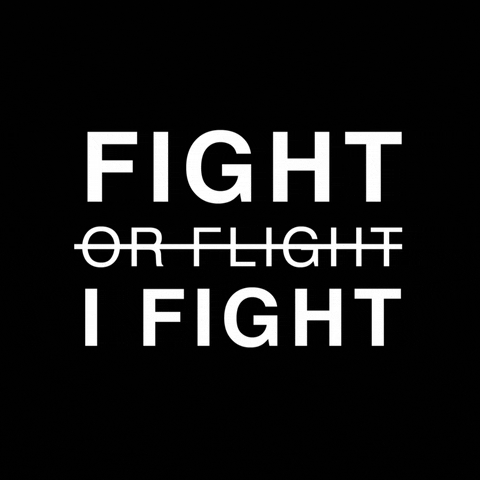The Scroll And The Struggle: How Our Ancient Brains Grapple With Content Explosion
Our "fight or flight" response gets activated almost everytime we consume content in today's digital world.
In today's hyper-connected world, we find ourselves swimming in an unprecedented ocean of content. Yet, while this abundance might appear to be a boon, it presents a unique challenge to our fundamentally ancient brains. Our innate "fight or flight" response, a survival mechanism honed over millennia, finds itself unexpectedly activated by this constant influx, often leading to feelings of overwhelm and a pervasive sense of being perpetually behind.
Consider the sheer scale of the digital deluge. Unlike our ancestors who primarily dealt with information directly relevant to their immediate survival – the rustling in the bushes, the change in weather patterns – humans today are bombarded with a global cacophony of data, much of which holds little direct bearing on our day-to-day existence. This constant stream, as highlighted earlier, is exponentially larger than anything our evolutionary history has prepared us for.
Our "fight or flight" response, deeply ingrained in our biology, is an elegant and efficient system designed for acute danger. When faced with a tangible threat, our bodies and minds instantly prioritize focus, preparing us to either confront the danger head-on or make a swift escape. This rapid mobilization of resources is crucial for survival in a world where threats are immediate and physical.
Fight, Flight, or……..?
However, the modern information environment presents a peculiar mismatch. While the endless scroll of our social media feeds or the barrage of notifications on our devices are not physical predators, they can trigger similar stress responses within us. The perceived urgency to stay informed, the fear of missing out (FOMO), and the constant awareness of an ever-expanding pool of information can activate our ancient alarm system. It's as if our brains interpret this relentless influx as a persistent, albeit intangible, threat, leading to a state of low-grade, chronic stress.
This constant exposure to overwhelming amounts of information leads to cognitive overload. Some estimate our brain’s capacity to process data to be only 50 bits per second, but others say unlike a man-made computer, a human brain can process data in parallel and not necessarily in a linear fashion. Anyway, this is not a class in neurology. Suffice it to say, pushing our brains beyond limit is where trouble starts. We've all felt the frustrating fallout: that foggy inability to concentrate, the mental paralysis when faced with decisions, and even the unexpected emotional turbulence. It's our brain's way of waving a white flag in the face of overload.
The sheer volume of content demands our attention, fragmenting our focus and leaving us feeling mentally drained. It's like trying to drink from a firehose – the sheer pressure and volume make it impossible to effectively absorb anything.
Furthermore, the way today's content is designed and delivered often exacerbates this issue by creating an illusion of urgency. Notifications, auto-playing videos, and the endless scroll are all features designed to capture and retain our attention.
We feel compelled to engage immediately, even when the content is neither urgent nor particularly important. This taps into our primal need to be aware of our surroundings, a survival instinct that is now being exploited by the digital realm.
In essence, our brains, still wired for a world of immediate, tangible threats, are struggling to cope with the abstract and relentless nature of the modern content explosion. The "fight or flight" response, while invaluable in its original context, is ill-equipped to navigate the digital deluge, often leaving us feeling stressed, overwhelmed, and perpetually playing catch-up. Understanding this fundamental mismatch between our ancient wiring and our modern environment is the first step towards developing healthier strategies for engaging with the vast ocean of content that surrounds us.
Mindful Consumption: Being Intentional in a Sea of Information
The first step in taming the digital beast is cultivating mindful consumption. This means moving from a reactive mode, where we're constantly responding to notifications and the allure of the endless scroll, to a proactive and intentional approach to our content intake.
Here are five ways to put this into practice:
Set Intentional Consumption Times: Just like we schedule meals, try scheduling specific times throughout the day for checking emails, social media, or news updates. Outside of these designated slots, resist the urge to constantly peek at your devices. This creates boundaries and helps regain control over your attention.
Define Your "Why": Before engaging with content, ask yourself: "Why am I consuming this?" Are you looking for specific information, connecting with friends, or simply seeking entertainment? Having a clear purpose can help you be more selective and avoid aimless scrolling.
Curate Your Feeds: Take control of the information you're exposed to. Unfollow accounts that consistently leave you feeling negative or overwhelmed. Subscribe to newsletters or podcasts that genuinely interest you and provide value. By consciously curating your feeds, you can reduce the noise and focus on content that aligns with your interests and goals.
Practice Single-Tasking: Resist the urge to multitask while consuming content. When reading an article or watching a video, give it your full attention. This not only enhances comprehension but also reduces the feeling of being overwhelmed by trying to process multiple streams of information simultaneously.
Be Present: When engaging with content, try to be fully present in the moment. Notice your thoughts and feelings without judgment. If you find yourself getting distracted or overwhelmed, gently redirect your attention back to what you're consuming.
Prioritizing Quality Over Quantity: Seeking Substance in the Noise
In a world where content is abundant, focusing on quality over quantity becomes crucial. It's about shifting our focus from consuming as much as possible to engaging with content that is meaningful, insightful, or truly enjoyable.
Here's how we can prioritize quality:
Identify Your Values and Interests: What topics genuinely fascinate you? What kind of information or entertainment leaves you feeling enriched or inspired? Focusing on content that aligns with your values and interests will naturally lead you towards higher-quality sources.
Seek Out Credible Sources: In the realm of news and information, prioritize reputable sources known for their accuracy and journalistic integrity. Be wary of clickbait headlines and sensationalized content that often lacks substance.
Engage with Long-Form Content: While short-form content has its place, make an effort to engage with longer articles, in-depth documentaries, or thoughtful podcasts. These formats often provide a more nuanced understanding of complex topics.
Reflect on What You Consume: After engaging with content, take a moment to reflect on what you've learned or how it made you feel. Did it add value to your understanding? Did it spark new ideas? This conscious reflection helps you discern what kind of content is truly beneficial for you.
Don't Be Afraid to Unsubscribe or Stop Following: If a particular source consistently provides low-quality or unengaging content, don't hesitate to unsubscribe or unfollow. Your attention is a valuable resource; invest it wisely.
Digital Detox: Actively incorporating digital detox into our routines provides essential respite for our overstimulated minds. Stepping away from screens allows our nervous systems to calm down and helps us reconnect with the physical world and our inner selves.
This newsletter is brought to you by content summarization service: synopsis.services
Synopsis is a human content summarization service that works on topics of your interests, understands your requirements, and sends you a summary with a nuanced understanding of the topic at hand. At a frequency you want, using a format of your choice.







